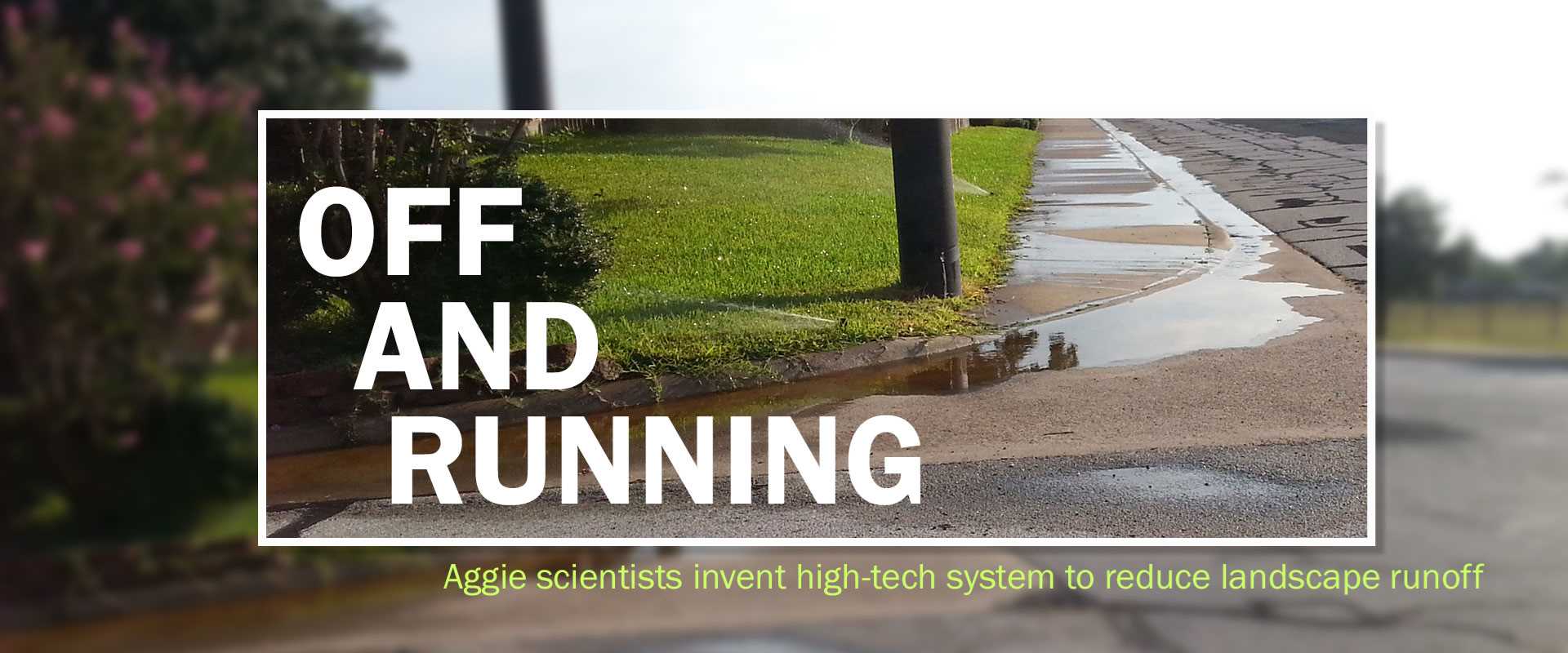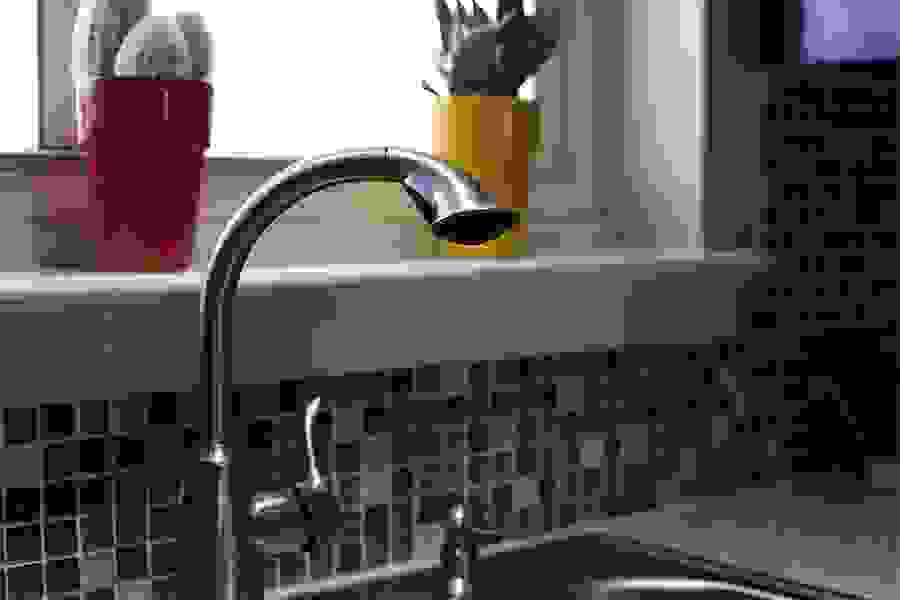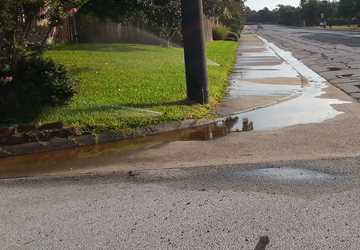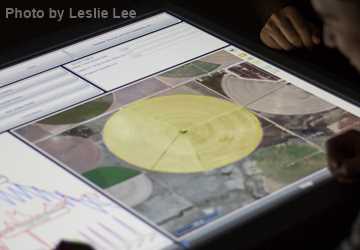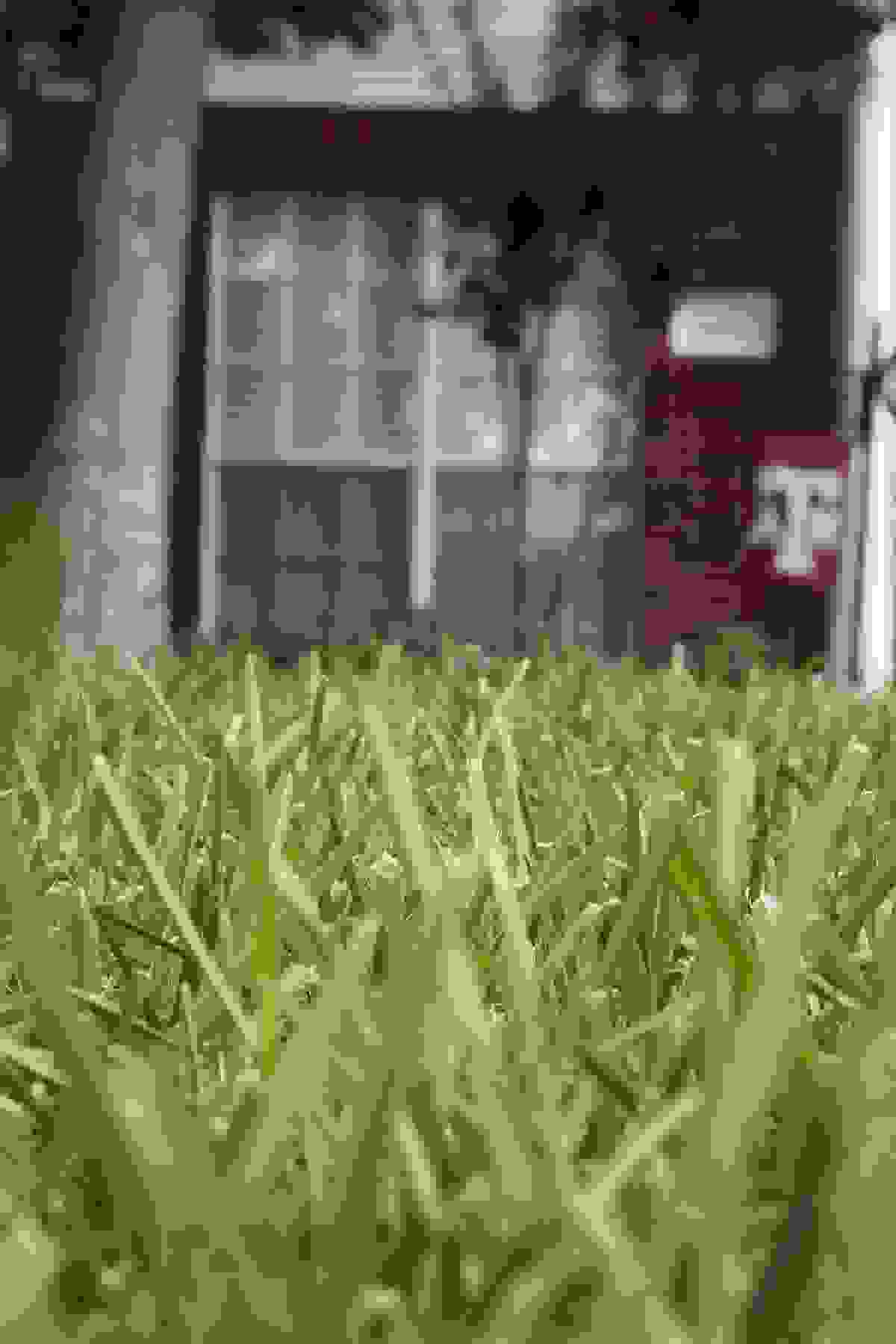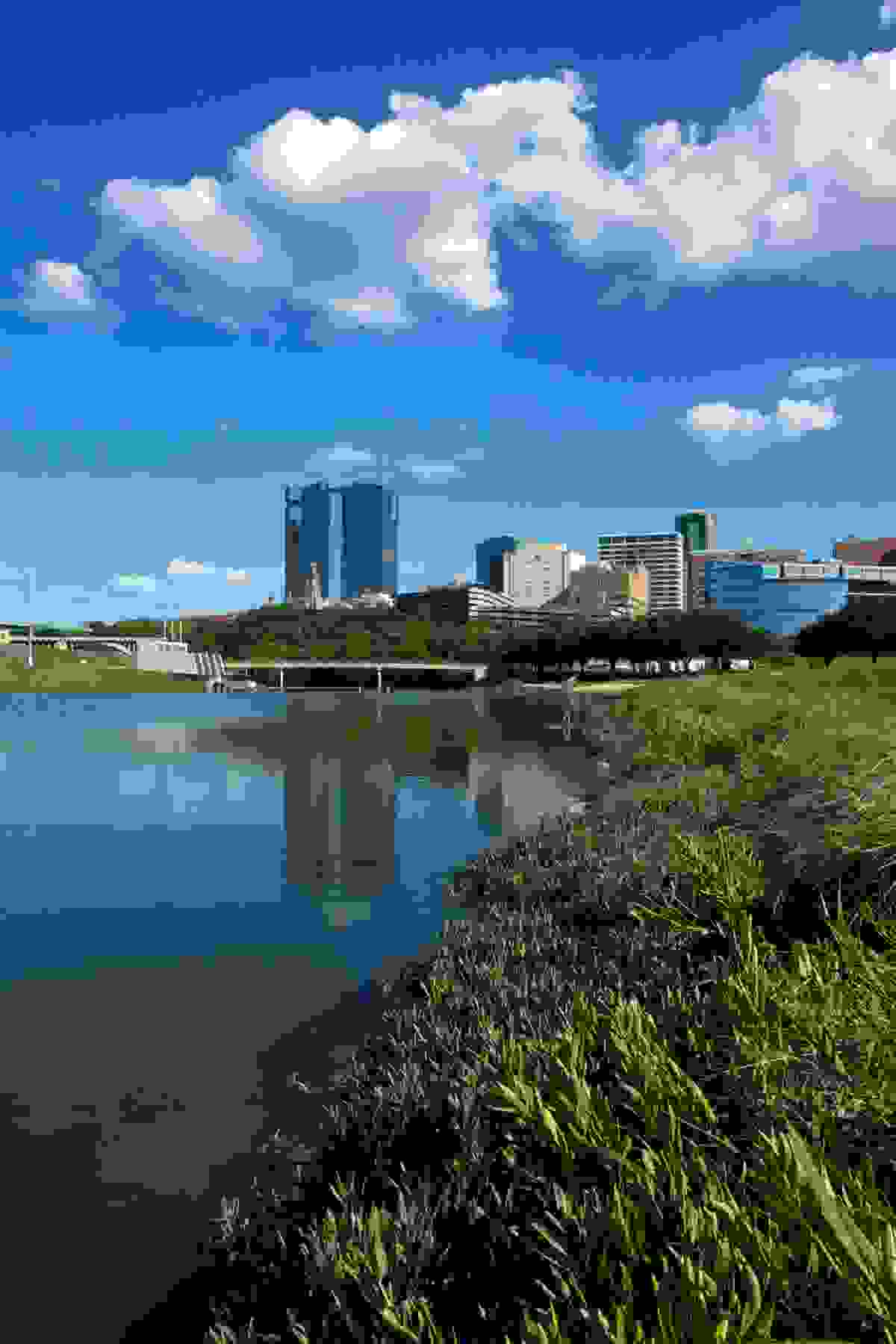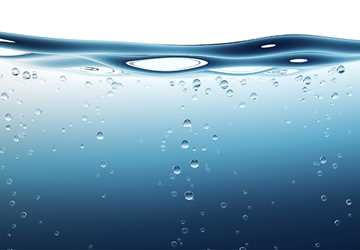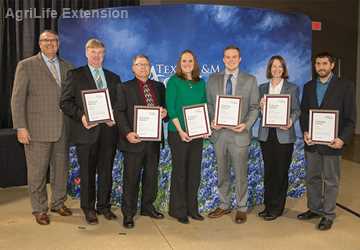By Leslie Lee
“What’s so wrong with runoff?”
Dr. Benjamin Wherley presented this question to a room full of water experts at Texas A&M University in February, most of them familiar with the details of why urban landscape irrigation runoff is a big problem. In addition to being a total waste of potable water, runoff can carry bacteria, excess fertilizer nutrients, sediment and other harmful things out of yards and into local water bodies, causing water quality issues.
The researchers at the symposium knew about the results of excess landscape watering, but how could the average homeowner stop runoff? Irrigation system controllers can be complicated, and runoff depends on many interconnected variables, including soil type and moisture, weather conditions and water quality.
For the last two years an interdisciplinary team of engineers, irrigation researchers and turfgrass experts have been developing, testing and perfecting a solution: the landscape irrigation runoff mitigation system, or LIRMS. The team was co-led by Wherley, assistant professor in Texas A&M’s Department of Soil and Crop Sciences, and Dr. Jorge Alvarado, associate professor in Texas A&M’s Department of Engineering Technology and Industrial Distribution.
A curbside solution
Runoff occurs when irrigation water does not infiltrate into the landscape’s soil, and it is influenced by many factors. Soils may be very tightly compacted, as is the case with many new homes; most builders like home sites’ soils to be compact and easier to manage, Wherley said. Too dry or too moist soil can also result in runoff, and soil type matters as well. Clay soils, found in many Texas regions, filter water very slowly. Weather conditions also affect infiltration rates, and drought-triggered residential watering restrictions sometimes cause homeowners to irrigate less often but much more heavily.
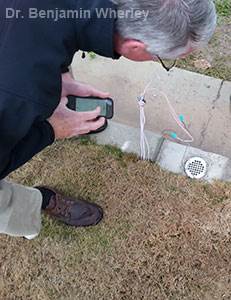
“Much of our research focuses on irrigation management, and we recognize that people are wasting quite a bit of water through runoff,” Wherley said. “In our tests, we have found that in many cases, landscapes lose about one-third of the irrigation water to runoff.”
The team embarked upon creating LIRMS because in residential landscapes, runoff water will become an even greater issue in the future, he said. Water quality and sodium content may change in water supplies as cities turn to alternative sources such as reclaimed water. Sodium reduces soil permeability and will increase runoff as it builds up in the soil over time.
To tackle these challenges, the research team built LIRMS out of two main components: a sensor that can detect when runoff is occurring, and a connection to either the main sprinkler system controller or individual sprinklers so that irrigation can be paused or stopped during runoff.
The team’s research began with developing and testing several prototype sensors that sensed runoff, using various technologies, including water-sensitive electrical switches, floats similar to those in toilets, water wheels and others. Small enough to fit inside a curb, the LIRMS product is both compact and smart. The ‘brains’ of the unit can take multiple inputs, from multiple runoff sensors and from multiple irrigation heads, Alvarado said, making very efficient irrigation runs possible.
In our tests, we have found that in many cases, landscapes lose about one-third of the irrigation water to runoff.
LIRMS prototype sensors were validated both in the lab and in the field to show the capability of detecting runoff, Wherley said.
When the tests were complete, LIRMS had not only reduced runoff water volumes by an average of 40 to 50 percent during a typical 30-minute, 1-inch irrigation run, but also allowed for 10 to 30 percent more water to soak into the soil during such runs.
Ideal tool for water-wise communities
Wherley envisions LIRMS as a convenient technology to help municipalities and communities reduce both pollution and water waste.
“When I talk to water managers in the Dallas-Fort Worth area, they say that in many of those communities, heavy soils and a lot of sloped areas result in runoff being a major issue,” he said.
Rain sensors are currently required by law on all irrigation systems on new homes, Wherley said. Similarly, incentivizing or requiring runoff sensors such as LIRMS could result in significant water savings, he said, and the costs would be minimal.
Even the team’s custom-built LIRMS prototypes were cheap enough to construct that their resulting water-cost savings would mean LIRMS could potentially “pay for itself” within one to two years, he said.
LIRMS also makes it possible to automate the cycle-soak style of lawn irrigation that Wherley and his colleagues often recommend, which is a big deal for the landscape irrigation industry, he said.
“With most irrigated landscapes, soil infiltration rates are low and precipitation rates are high, so you do need to break the run up with pauses,” Wherley said.
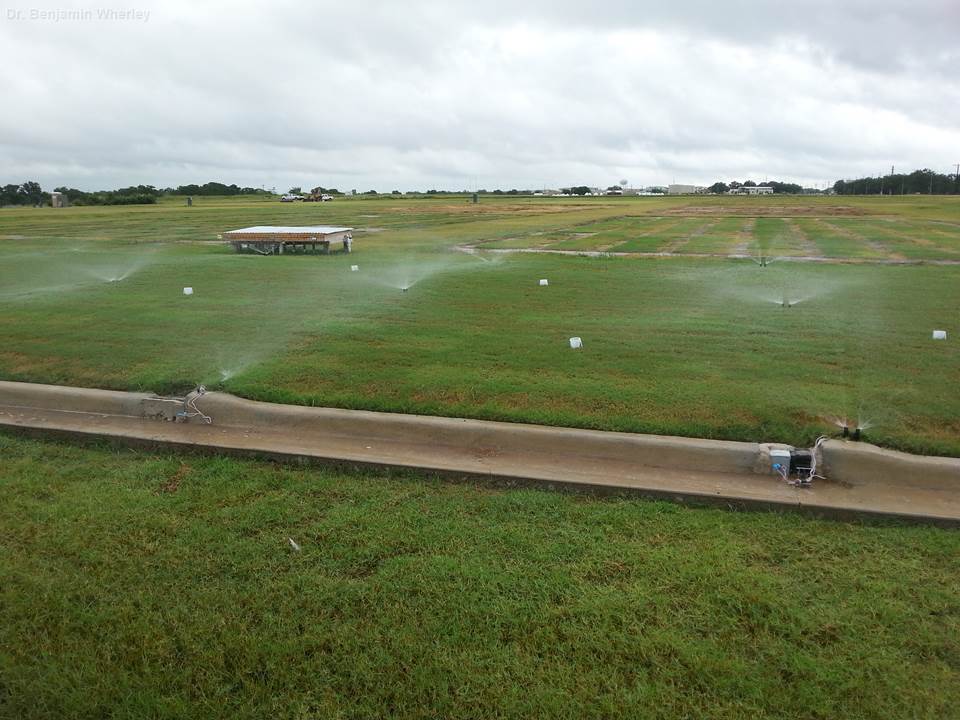
Cycle-soaking solves the slow soil infiltration issue through irrigation runs programmed to water for multiple cycles for a shorter amount of time, such as 10 minutes, with pauses of 30 minutes or more between each cycle, allowing time for the water to soak into the soil. Many average homeowners set their sprinkler irrigation systems for straight 30-minute runs, resulting in not only wasted water running off but also unmet landscape water needs, Wherley said.
When LIRMS detects runoff, it pauses the system for a given amount of time and then picks up the irrigation run where it left off, resulting in pulses of irrigation with intermittent pauses. Although this often results in a 30-minute run taking a few hours to complete, Wherley said, a more efficient and complete soaking of the soil takes place.
But to the average homeowner, understanding how to set a controller to cycle-soak can be confusing, he said.
“We have automated that process via LIRMS, instead of relying on people to cycle-soak, and I think that could have a big impact on water-use efficiency in landscapes,” Wherley said.
LIRMS also compliments and improves upon other already existing landscape irrigation technologies, such as rain sensors and soil moisture sensors, because “it goes right to the point,” Alvarado said.
“If the soil is saturated and the water isn’t soaking in, then the runoff sensor will detect that,” he said. “If the soil is dry and the water is running off, the runoff sensor will detect that as well.”
Building on the invention
A provisional patent has been filed for the system, and a second phase of the project has been funded. The team plans to test LIRMS units in real-world conditions in urban cities and get feedback from water managers in the second phase. Researchers will also be developing an app to enable remote use of LIRMS and viewing of irrigation data.
“We’re actually going to get a couple of units out onto residential landscapes, and we’re going to work closely with water managers on that,” Wherley said. “We will be building up a nice dataset to show, here’s the amount of water we can save under these types of soils and these conditions to demonstrate what this system is capable of.”
If we can keep this water on the landscape, then we’re not only eliminating runoff of compounds that might impair the environment, but we’re also getting more water into the soil.
LIRMS could benefit not only residential neighborhoods but also resorts, golf courses and commercial landscapes, Alvarado said.
“Within two years, we hope that LIRMS technology will be on the market and available to consumers,” Wherley said.
“If we can keep this water on the landscape, then we’re not only eliminating runoff of compounds that might impair the environment, but we’re also getting more water into the soil, which will result in a greener lawn that might be perceived as not needing as much water, continuing the water savings. It will help people achieve a better landscape, using less water than they’ve been using.”
This project was funded by a joint Texas A&M AgriLife Research, Texas A&M Engineering Experiment Station and Texas A&M AgriLifeExtension Service Water Seed Grant: Creation and Deployment of Water-Use Efficient Technology Platforms. In 2013, the Texas Legislature charged the agencies to address the critical nexus for water-use efficiency as part of addressing the future water needs of Texas.

